Must-Know Call Center KPIs for 2025 Excellence
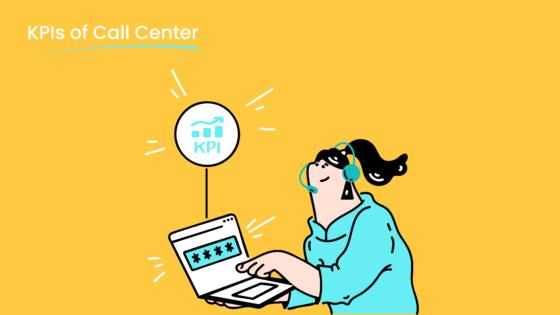
In the fast-paced world of customer service, tracking key performance indicators for call center success has become more than just a strategy—it’s a necessity. Metrics like Customer Satisfaction Score (CSAT) and First Call Resolution (FCR) directly impact how customers perceive your brand. When you focus on improving these numbers, you create trust, loyalty, and a seamless experience for your customers. At the same time, metrics like Average Handle Time (AHT) and Call Abandonment Rate help you refine operational efficiency and ensure your agents work smarter, not harder.
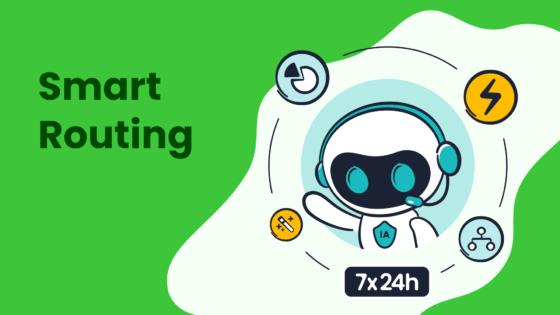
You don’t have to tackle this alone. Advanced tools like Sobot’s Voice/Call Center make it easier to monitor and optimize these metrics. With features like intelligent call routing and real-time analytics, you can boost both customer satisfaction and agent performance. By leveraging such technology, you’ll be ready to meet the challenges of 2025 head-on.
Understanding Key Performance Indicators for Call Center
What Are Call Center KPIs?
Call center KPIs, or key performance indicators, are measurable values that help you evaluate the success of your call center operations. These metrics provide insights into how well your team is performing, how satisfied your customers are, and how efficiently your resources are being used. Think of them as the compass guiding your call center toward better customer experience and operational excellence.
Here’s a quick look at some essential call center metrics and their definitions:
| KPI | Definition | Related Industries |
|---|---|---|
| First Call Resolution | Resolving customer issues on the first call without follow-ups | Healthcare, Law, Finance, Non-profit |
| Speed to Answer | Time it takes for an agent to answer a call | Healthcare |
| Abandonment Rate | Percentage of calls dropped before reaching an agent | Healthcare |
| Handle Time | Average time taken to resolve a customer inquiry | Law, Finance, Education |
| Net Promoter Score | Likelihood of customers recommending your brand | Finance, Healthcare |
These KPIs are not just numbers—they’re the foundation for improving your call center's performance.
Why Are Call Center Metrics Crucial for 2025?
In 2025, customer expectations will be higher than ever. People want quick, efficient, and personalized service. Call center metrics help you meet these demands by identifying areas for improvement and tracking progress. For instance, did you know that 77% of customers expect immediate interaction when contacting a call center? If your Speed to Answer is slow, you risk losing them.
Metrics like Abandonment Rate and Agent Occupancy Rate also play a big role. A high abandonment rate could mean frustrated customers, while an ideal occupancy rate (85%-90%) ensures agents stay productive without burning out. Monitoring these metrics helps you strike the right balance between customer satisfaction and operational efficiency.
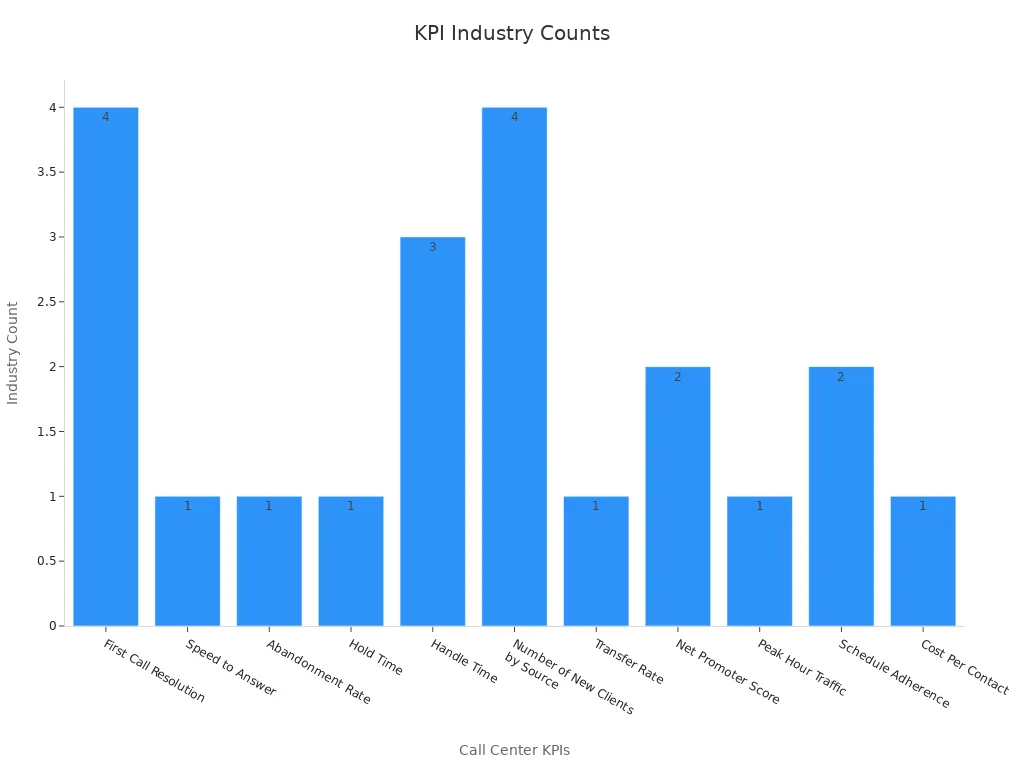
Aligning KPIs with Customer Experience and Business Goals
Your call center KPIs should align with both customer experience and your business objectives. For example, Customer Satisfaction (CSAT) measures how well you’re meeting customer needs, while Net Promoter Score (NPS) reflects customer loyalty. These metrics directly impact your bottom line by driving retention and advocacy.
Here’s how some KPIs connect to business goals:
| KPI | Description | Business Goal Alignment |
|---|---|---|
| Customer Satisfaction (CSAT) | Measures how well you meet customer needs and expectations | Indicates customer happiness and retention |
| Net Promoter Score (NPS) | Gauges the likelihood of customers recommending your brand | Reflects customer loyalty and advocacy |
| Customer Lifetime Value (CLTV) | Estimates total revenue a customer generates over their lifetime | Prioritizes retention for long-term success |
By focusing on these metrics, you can create a seamless customer experience while achieving your business targets. Tools like Sobot’s Voice/Call Center make it easier to track and optimize these KPIs, ensuring you stay ahead in the competitive landscape.
Customer Experience Metrics to Prioritize

When it comes to delivering exceptional customer service, prioritizing the right customer experience metrics is key. These metrics not only help you understand how well your call center is performing but also reveal what your customers truly value. Let’s dive into three critical metrics that can transform your operations.
Customer Satisfaction Score (CSAT)
Customer satisfaction score, or CSAT, is one of the most straightforward ways to measure how happy your customers are with your service. After an interaction, you simply ask customers to rate their experience, usually on a scale of 1 to 5. The higher the score, the better your team is doing.
Why does CSAT matter? Because happy customers stick around. Studies show that 74% of consumers are more likely to buy based on experiences alone, and they’re even willing to pay a 16% price premium for great service. By tracking CSAT, you can identify areas where your team excels and where improvements are needed. For example, if your CSAT dips after long wait times, it’s a sign to optimize your call routing or staffing.
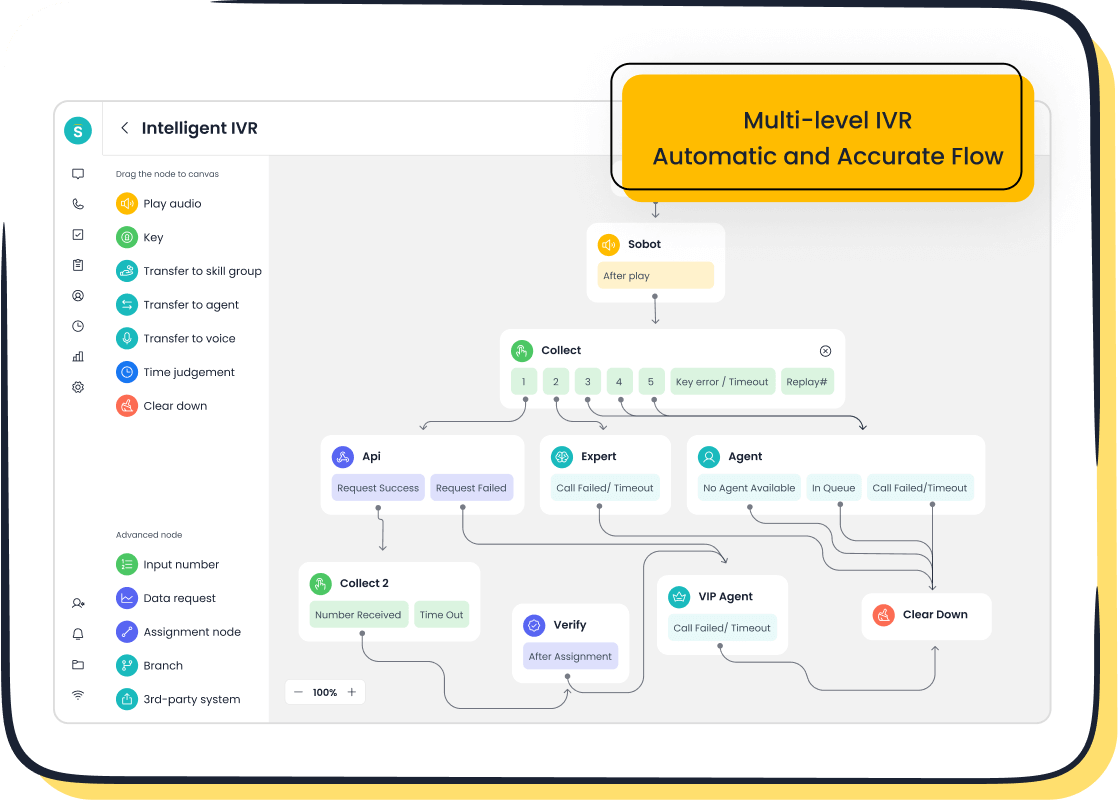
Sobot’s Voice/Call Center can help you boost CSAT by providing tools like intelligent IVR and real-time analytics. These features ensure customers are connected to the right agent quickly, reducing frustration and improving satisfaction.
Net Promoter Score (NPS)
Net Promoter Score (NPS) goes beyond satisfaction to measure loyalty. It asks one simple question: “How likely are you to recommend our company to a friend or colleague?” Customers respond on a scale of 0 to 10, and their answers categorize them as promoters, passives, or detractors.
Why is NPS so powerful? Because loyal customers are your best advocates. They’re five times more likely to recommend your brand and 54% more likely to make repeat purchases. Tracking NPS helps you understand how well you’re building long-term relationships with your customers.
Companies that consistently monitor NPS outperform their competitors in retention and revenue growth. With Sobot’s unified workspace, you can track NPS alongside other call center metrics, giving you a complete picture of your customer experience.
First Call Resolution (FCR)
First call resolution (FCR) is all about solving customer issues on the first try. It’s one of the most important call center metrics because it directly impacts both customer satisfaction and operational efficiency. When customers don’t have to call back or escalate their issues, they’re happier—and your agents save time.
Did you know that for every complaint you hear, there are 26 unhappy customers who stay silent? FCR helps you address problems before they snowball. Plus, it’s a win-win: customers get quick solutions, and your team reduces repeat calls.

Sobot’s AI-powered Voicebot and smart call routing make achieving high FCR easier. By connecting customers to the right resources immediately, you can resolve issues faster and improve first-contact resolution rates.
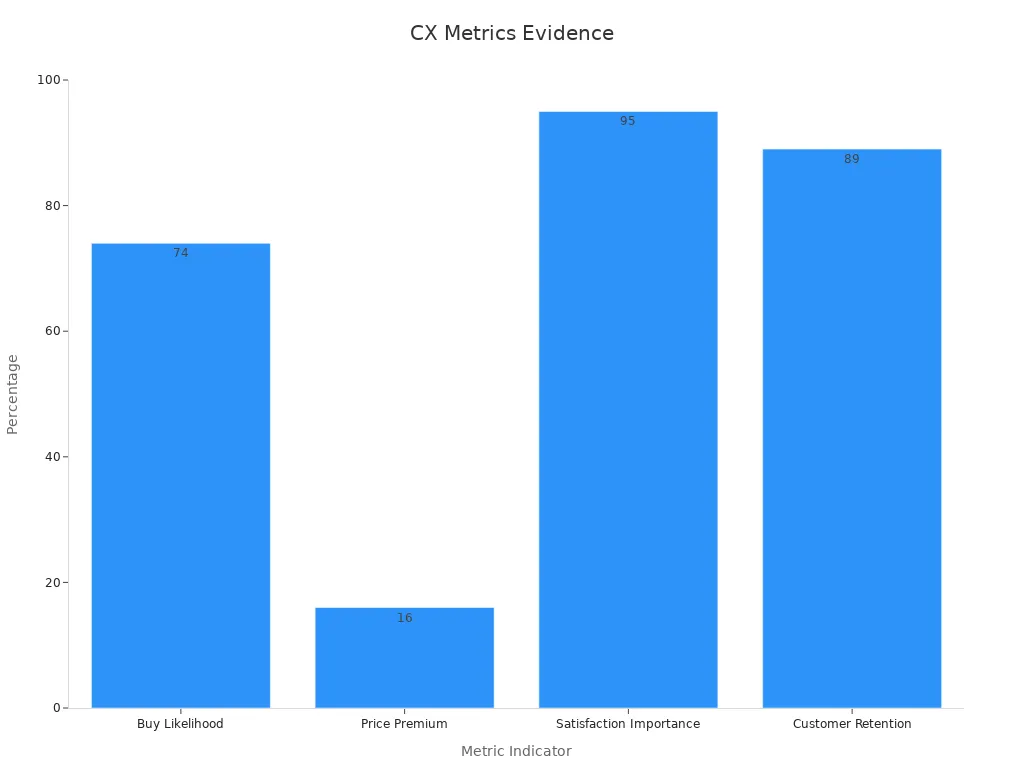
Why These Metrics Matter
Customer experience metrics like CSAT, NPS, and FCR aren’t just numbers—they’re your roadmap to success. They help you understand what your customers need and how to deliver it. And when you prioritize these metrics, you’re not just improving your call center—you’re building a brand that customers trust and recommend.
| Statistic | Source |
|---|---|
| 74% of consumers are at least somewhat likely to buy based on experiences alone. | Forbes & Arm Treasure Data |
| Consumers will pay a 16% price premium for a great customer experience. | PwC |
| 95% of contact center professionals view customer satisfaction as the most important call center metric. | Call Centre Helper |
| Companies with strong omnichannel customer engagement retain 89% of their customers. | Invesp |
By leveraging tools like Sobot’s Voice/Call Center, you can track and optimize these metrics effortlessly. Whether it’s improving first-contact resolution or boosting customer satisfaction, the right technology makes all the difference.
Customer Effort Score (CES)
How easy is it for your customers to get their issues resolved? That’s what Customer Effort Score (CES) measures. It’s a simple yet powerful metric that asks customers to rate the effort they had to put in to solve their problem. The lower the effort, the better the experience. After all, nobody likes jumping through hoops to get help.
Why does CES matter? Because it directly impacts customer satisfaction. Research from Gartner shows that 96% of customers with high-effort experiences become more disloyal, while 94% of those with low-effort experiences are likely to repurchase. If your CES is high, it’s a red flag that your processes might be too complicated or your agents need better tools.
Sobot’s Voice/Call Center can help you lower CES. Features like intelligent IVR and smart call routing ensure customers reach the right agent quickly. Plus, the unified workspace gives agents all the information they need in one place, reducing the back-and-forth that frustrates customers. By simplifying the journey, you make it easier for customers to stay loyal.
Average Handle Time (AHT)
Average Handle Time (AHT) is one of the most tracked call center metrics. It measures the average time an agent spends on a customer interaction, including talk time, hold time, and after-call work. While shorter AHT often means greater efficiency, it’s important not to sacrifice quality for speed.
Why should you care about AHT? Because it’s a balancing act. If your AHT is too high, it could mean agents are struggling to resolve issues. If it’s too low, customers might feel rushed. The sweet spot varies by industry, but the goal is always the same: resolve issues efficiently without compromising the customer experience.
Sobot’s AI-powered Voicebot can help reduce AHT by handling repetitive queries before they even reach an agent. For more complex issues, the platform’s real-time analytics and call tracking features give agents the insights they need to resolve problems faster. By optimizing AHT, you not only improve operational efficiency but also enhance customer satisfaction.
Call Abandonment Rate
Call abandonment rate is a critical metric that measures the percentage of calls disconnected by customers before speaking to an agent. A high abandonment rate often signals frustration, whether due to long wait times, confusing IVR menus, or insufficient staffing.
Why is this metric so important? Because it directly affects customer satisfaction and loyalty. Imagine calling a company for help, only to hang up after waiting too long. Would you call back? Probably not. Studies show that 60% of customers won’t return after a poor service experience. That’s why keeping your abandonment rate low is essential.

Sobot’s Voice/Call Center offers several tools to tackle this issue. Intelligent IVR reduces wait times by routing calls to the right agent or department. Real-time monitoring lets you adjust staffing levels on the fly to handle call volume spikes. With a 99.99% system uptime, you can also ensure customers don’t face technical disruptions. These features work together to lower your call abandonment rate and keep customers engaged.
Pro Tip: Monitor call volume trends to predict busy periods and adjust staffing accordingly. Sobot’s forecasting tools make this easy, helping you stay ahead of demand.
Agent Performance Metrics for Operational Excellence

Agent performance metrics are the backbone of a successful call center. They help you measure how effectively your team is working and identify areas for improvement. By focusing on these metrics, you can ensure your agents stay productive, motivated, and aligned with your business goals. Let’s explore three key metrics that can elevate your call center operations.
Agent Utilization Rate
Agent utilization rate measures how much time your agents spend actively handling calls or tasks compared to their total available time. It’s a critical metric for understanding how efficiently your team is working. A high utilization rate means your agents are busy, but if it’s too high, it could lead to burnout. On the other hand, a low rate might indicate underutilized resources.
Why does this matter? Because finding the right balance is key to maintaining both productivity and morale. Industry benchmarks suggest an ideal utilization rate of 75% to 85%. This range ensures your agents stay engaged without feeling overwhelmed.
Sobot’s Voice/Call Center can help you optimize this metric. With features like real-time monitoring and intelligent call routing, you can distribute workloads evenly across your team. This not only improves agent performance but also enhances customer satisfaction by reducing wait times.
Pro Tip: Use data analytics to identify peak call times and adjust staffing levels accordingly. Sobot’s forecasting tools make this process seamless, helping you maintain an optimal utilization rate.
Average Speed of Answer (ASA)
Average Speed of Answer (ASA) measures how quickly your agents respond to incoming calls. It’s a direct reflection of your call center’s efficiency and impacts customer satisfaction significantly. Nobody likes waiting on hold, right? A low ASA means your team is quick to assist, which leaves a positive impression on your customers.
The ideal ASA varies by industry, but a general benchmark is under 20 seconds. If your ASA is higher, it might be time to evaluate your staffing levels or call routing strategies. For example, long wait times could frustrate customers and increase your call abandonment rate.
Sobot’s intelligent IVR and smart call routing features can help you lower your ASA. These tools ensure calls are directed to the right agent or department immediately, minimizing delays. Plus, with real-time analytics, you can monitor ASA and make adjustments on the fly to keep your customers happy.
Agent Turnover Rate
Agent turnover rate measures how often agents leave your call center within a specific period. High turnover rates can disrupt operations, increase training costs, and negatively impact team morale. Retaining skilled agents is crucial for maintaining consistent service quality.
Why do agents leave? Common reasons include burnout, lack of career growth, and inadequate support. Addressing these issues can significantly improve retention. For instance, providing regular training and recognizing top performers can boost morale and job satisfaction.
Sobot’s unified workspace and AI-powered tools make your agents’ jobs easier by reducing repetitive tasks and providing them with all the information they need in one place. When agents feel supported and equipped to succeed, they’re more likely to stay with your company.
Did You Know? Studies show that replacing an agent can cost up to 20% of their annual salary. Investing in tools and strategies to reduce turnover can save you money and improve team stability.
By focusing on these agent performance metrics, you can create a more efficient and motivated team. Tools like Sobot’s Voice/Call Center provide the insights and features you need to track and improve these metrics, ensuring your call center operates at its best.
Quality Assurance (QA) Scores
Quality Assurance (QA) Scores measure how well your agents handle customer interactions. These scores are based on criteria like communication skills, problem-solving abilities, and adherence to company policies. QA Scores ensure your team delivers consistent, high-quality service.
Why should you care about QA Scores? Because they directly impact customer satisfaction and loyalty. Imagine calling a company and receiving unclear or unhelpful responses. That experience would likely leave you frustrated. QA Scores help you identify gaps in agent performance and provide targeted training to improve those areas.
Sobot’s Voice/Call Center simplifies QA tracking. Its real-time monitoring tools let you evaluate calls as they happen. You can even use AI-powered analytics to identify trends in agent behavior. For example, if agents struggle with specific queries, you can create training modules to address those challenges. This proactive approach boosts both agent performance and customer satisfaction.
Pro Tip: Regularly review QA Scores to spot patterns. Use this data to refine your training programs and ensure your team stays ahead of customer expectations.
Adherence to Schedule
Adherence to Schedule measures how well agents stick to their assigned shifts and breaks. It’s a crucial metric for maintaining operational efficiency. When agents follow their schedules, you can handle call volumes effectively and minimize wait times for customers.
Why does this matter? Because poor schedule adherence can lead to understaffing during peak hours. This increases Average Speed of Answer (ASA) and Call Abandonment Rates, frustrating customers. On the flip side, strong adherence ensures your team is ready to tackle incoming calls without delays.
Sobot’s Voice/Call Center helps you monitor adherence effortlessly. Its real-time dashboards show which agents are online and available. You can also set automated alerts for schedule deviations, allowing you to address issues immediately. By keeping your team on track, you improve agent performance and ensure customers receive timely support.
Did You Know? Studies show that call centers with high schedule adherence see a 20% improvement in customer satisfaction.
Agent Occupancy Rate
Agent Occupancy Rate measures the percentage of time agents spend actively working compared to their total available time. It’s a key indicator of productivity. A balanced occupancy rate ensures agents stay engaged without feeling overwhelmed.
Why is this metric important? Because it affects both agent morale and customer experience. If occupancy is too high, agents may experience burnout. If it’s too low, resources are underutilized. Industry benchmarks suggest an ideal range of 85%-90%.
Sobot’s Voice/Call Center optimizes occupancy rates with intelligent call routing and workload distribution. For example, during peak hours, the platform automatically assigns calls to available agents, ensuring no one is overloaded. Its real-time analytics also help you identify trends and adjust staffing levels accordingly. By maintaining a healthy occupancy rate, you enhance agent performance and keep your team motivated.
Quick Tip: Use Sobot’s forecasting tools to predict call volume spikes and plan staffing in advance. This keeps occupancy rates within the ideal range.
Operational Metrics for Call Center Efficiency
Service Level
Service level measures how well your call center meets customer expectations for timely responses. It’s typically expressed as a percentage, such as answering 80% of calls within 20 seconds. This metric directly impacts customer satisfaction. When customers know they’ll get quick assistance, they’re more likely to trust your service.
Why does service level matter? Because it reflects your ability to handle demand. For example, during peak hours, a low service level might indicate understaffing or inefficient call routing. On the other hand, a high service level shows that your team is prepared and responsive.

Sobot’s Voice/Call Center can help you maintain an excellent service level. With features like intelligent IVR and smart call routing, you can ensure calls are directed to the right agents quickly. Real-time monitoring also allows you to adjust staffing as needed, keeping your service level consistent even during busy periods.
Pro Tip: Aim for a service level that balances speed and quality. A common benchmark is 80/20, but your target may vary based on your industry.
Cost Per Call
Cost per call is a critical metric for understanding the financial efficiency of your call center. It calculates the total cost of running your operations divided by the number of calls handled. Lowering this cost without sacrificing quality can significantly boost profitability.
Why should you track this? Because it highlights inefficiencies. For instance, if your cost per call is high, it might be due to long total resolution times or underutilized resources. By identifying these issues, you can make targeted improvements.
Sobot’s Voice/Call Center offers tools to reduce costs while maintaining high-quality service. Features like AI-powered Voicebots handle repetitive queries, freeing agents to focus on complex issues. This reduces total resolution time and improves overall efficiency. Additionally, Sobot’s unified workspace streamlines agent workflows, cutting down on unnecessary delays.
- Key Benefits of Monitoring Cost Per Call:
- Enhances productivity and profitability.
- Identifies areas for cost-saving improvements.
- Ensures resources are used effectively.
Call Volume Trends
Call volume trends reveal patterns in customer interactions over time. By analyzing these trends, you can predict busy periods and prepare accordingly. For example, retail call centers often see spikes during holiday seasons, while financial services may experience increased activity during tax season.
Why are these trends important? Because they help you allocate resources efficiently. If you know when to expect high call volumes, you can adjust staffing levels and reduce wait times. This improves both customer satisfaction and operational efficiency.
Sobot’s Voice/Call Center includes advanced forecasting tools to help you track and analyze call volume trends. With real-time data, you can identify peak hours and plan ahead. The platform’s global network and 99.99% uptime ensure your call center remains reliable, even during high-demand periods.
Did You Know? Monitoring call volume trends can reduce call abandonment rates and improve total resolution time, creating a better experience for your customers.
Call Transfer Rate
Call transfer rate measures how often calls are transferred from one agent to another before resolving the issue. A high transfer rate can frustrate customers, as they often have to repeat their concerns. It also increases the total resolution time, which impacts both customer satisfaction and operational efficiency.
Why does this matter? Because every transfer adds friction to the customer experience. For example, if a customer calls to resolve a billing issue but gets transferred multiple times, they’re likely to feel annoyed. Studies show that 33% of customers consider switching brands after just one poor service experience. Keeping your transfer rate low is key to retaining loyal customers.
Sobot’s Voice/Call Center can help you reduce unnecessary transfers. Its intelligent IVR and smart call routing ensure customers connect with the right agent or department on the first try. This not only improves the customer experience but also shortens the total resolution time. Real-time analytics let you monitor transfer rates and identify patterns, so you can make adjustments as needed.
Pro Tip: Train your agents to handle a wider range of issues. This reduces the need for transfers and empowers your team to resolve problems faster.
Average Queue Time
Average queue time measures how long customers wait in line before speaking to an agent. Long wait times can lead to higher call abandonment rates and lower customer satisfaction. Nobody likes waiting, right?
Here’s the thing: customers expect quick service. According to a report by HubSpot, 90% of customers rate an "immediate" response as important when they have a question. If your queue times are too long, you risk losing customers to competitors.
Sobot’s Voice/Call Center offers tools to keep queue times low. Features like intelligent IVR and AI-powered Voicebots handle simple queries, freeing up agents for more complex issues. The platform’s real-time monitoring also helps you adjust staffing during peak hours, ensuring customers don’t wait longer than necessary. By reducing queue times, you can improve customer satisfaction and decrease the total resolution time.
Did You Know? Businesses that prioritize reducing queue times see a 15% increase in customer retention.
Forecast Accuracy
Forecast accuracy measures how well you predict call volumes and staffing needs. Accurate forecasts help you allocate resources efficiently, reducing both customer wait times and agent burnout. Poor forecasting, on the other hand, can lead to understaffing during busy periods or overstaffing during slow times.
Why is this important? Because it directly impacts your call center’s performance. For instance, if you underestimate call volumes during a product launch, your agents may struggle to keep up, increasing the total resolution time and frustrating customers.
Sobot’s Voice/Call Center includes advanced forecasting tools that analyze historical data and call volume trends. These tools help you predict busy periods and plan staffing accordingly. With a 99.99% system uptime and global network support, Sobot ensures your call center operates smoothly, even during unexpected spikes in demand.
Quick Tip: Use Sobot’s real-time analytics to compare forecasted and actual call volumes. This helps you refine your predictions over time.
How Sobot's Voice/Call Center Optimizes Call Center Metrics
Leveraging AI-Powered Tools for Real-Time Insights
Imagine having a crystal ball for your call center. That’s what Sobot’s AI-powered tools feel like. They give you real-time insights into your operations, helping you make smarter decisions on the fly. With over 300 performance indicators available, you can track everything from customer satisfaction to agent productivity. Configurable dashboards and customizable reports make it easy to focus on what matters most to your business.
Here’s how Sobot’s tools improve key metrics:
| Metric | Improvement |
|---|---|
| Inbound discussion volume | Reduced by 20% |
| Positive feedback | Increased to 96%+ |
| Correct answers | Over 80% |
| Customer satisfaction (CSAT) | 97% |
For example, if you notice a spike in call abandonment rates, Sobot’s real-time monitoring lets you adjust staffing immediately. This proactive approach keeps your customers happy and your team efficient.
Automating Workflows with Intelligent IVR
Nobody likes being stuck in a maze of phone menus. Sobot’s Intelligent IVR simplifies the process by routing calls to the right agent or department instantly. You can customize greetings, build menus, and even go live in real time with a drag-and-drop interface. This automation reduces wait times and ensures customers get the help they need without frustration.
The results speak for themselves. Sobot’s IVR system resolves 22.2% of customer questions through self-service alone. That means fewer calls for your agents and faster solutions for your customers. Plus, with features like smart call routing, you can handle peak call volumes without breaking a sweat.
Quick Tip: Use Sobot’s IVR to create personalized experiences for VIP customers. It’s a small touch that makes a big difference.
Enhancing Customer Experience with Unified Workspaces
Juggling multiple systems can slow your team down. Sobot’s unified workspace brings everything together in one place. Agents can access customer histories, call recordings, and real-time data without switching screens. This streamlined approach boosts efficiency and ensures consistent service.
For instance, when a customer calls about a previous issue, your agent can see all the details instantly. No need to ask the same questions twice. This not only saves time but also improves the overall experience. Happy customers mean better call center metrics, like higher CSAT scores and lower average handle times.
With Sobot’s unified workspace, your team works smarter, not harder. And that’s a win for everyone.
Tracking and Analyzing Call Data for Continuous Improvement
Call data is like a treasure chest of insights waiting to be unlocked. By tracking and analyzing this data, you can uncover patterns, identify bottlenecks, and make informed decisions to improve your call center's performance. But how do you get started?
First, focus on the key metrics. Metrics like Average Handle Time (AHT), First Call Resolution (FCR), and Call Abandonment Rate provide a clear picture of your call center's efficiency. For example, if your AHT is climbing, it might indicate that agents need better tools or training. On the other hand, a high FCR shows that your team is resolving issues effectively on the first try, which boosts customer satisfaction.
Sobot’s Voice/Call Center makes this process seamless. Its real-time monitoring tools let you track over 300 performance indicators. You can view trends, compare data, and even generate custom reports to share with your team. Imagine spotting a spike in call volume during a product launch and adjusting staffing levels instantly. That’s the power of real-time insights.
Pro Tip: Use historical call data to predict future trends. For instance, if you notice a pattern of increased calls during the holiday season, you can prepare by scheduling more agents in advance.
Another game-changer is call recording and transcription. These features allow you to review interactions and identify areas for improvement. Did an agent struggle with a specific query? Use that as a training opportunity. Sobot’s platform even integrates AI-powered analytics to highlight recurring issues, so you can address them proactively.
Tracking call data isn’t just about numbers. It’s about understanding your customers and delivering better service. With tools like Sobot’s Voice/Call Center, you can turn data into actionable insights and continuously improve your operations.
Did You Know? Businesses that leverage call data analytics see a 25% improvement in customer satisfaction, according to McKinsey.
Strategies to Track and Improve Call Center KPIs
Using Advanced Analytics and Reporting Tools
Tracking call center KPIs becomes much easier when you have the right tools. Advanced analytics and reporting tools are game-changers for improving performance. They help you monitor metrics like customer satisfaction, agent productivity, and call resolution rates in real time.
Here’s how these tools can make a difference:
- AI for real-time data analysis helps you spot trends and areas for improvement instantly. For example, if your call abandonment rate spikes, you can act immediately to adjust staffing.
- Automated reporting saves time by eliminating manual data collection. This allows your team to focus on enhancing customer experiences instead of crunching numbers.
- User-friendly dashboards present complex data visually. This makes it easier for your team to understand and respond to operational changes quickly.
Sobot’s Voice/Call Center offers all these features and more. Its real-time monitoring and customizable dashboards let you track over 300 performance indicators effortlessly. By using these tools, you can stay ahead of challenges and keep your operations running smoothly.
Setting Realistic and Actionable KPI Goals
Setting goals for your call center KPIs is essential, but they need to be realistic and actionable. Start by identifying the metrics that matter most to your business, like customer satisfaction or first call resolution. Then, set specific targets. For instance, aim to reduce average handle time by 10% over the next quarter.
Break these goals into smaller, achievable steps. If you want to improve first call resolution, focus on training agents to handle a wider range of issues. Tools like Sobot’s AI-powered Voicebot can also help by resolving repetitive queries before they reach an agent.
Remember, the key is to set goals that challenge your team without overwhelming them. Regularly review your progress and adjust your targets as needed.
Regularly Reviewing and Adjusting Metrics
Call center metrics aren’t static. They change as your business grows and customer expectations evolve. That’s why it’s crucial to review your KPIs regularly. Look for patterns in your data. Are customers waiting too long during peak hours? Is your customer satisfaction score dropping after certain types of calls?
Use these insights to make adjustments. For example, if your average queue time is increasing, consider adding more agents during busy periods. Sobot’s forecasting tools can help you predict call volume spikes and plan staffing accordingly.
By staying flexible and proactive, you can ensure your call center continues to meet both customer needs and business goals.
Training Agents to Align with KPI Objectives
Your agents are the backbone of your call center. If they don’t understand how their performance impacts key metrics, it’s hard for them to meet your goals. Training them to align with KPI objectives isn’t just about teaching skills—it’s about creating a culture of accountability and growth.
Start with Clear Expectations
Agents need to know what’s expected of them. Share your KPI goals, like improving First Call Resolution (FCR) or lowering Average Handle Time (AHT). Break these metrics down into actionable steps. For example, if your goal is to boost FCR, train agents to ask clarifying questions and use tools like Sobot’s unified workspace to access customer histories.
Pro Tip: Use visual aids like charts or dashboards to show agents how their performance impacts overall metrics. Seeing progress in real-time motivates them to stay on track.
Provide Hands-On Training
Interactive training sessions work best. Role-playing exercises can help agents practice handling calls efficiently while maintaining quality. For instance, simulate scenarios where customers have complex issues. Teach agents to use Sobot’s AI-powered Voicebot to handle repetitive queries, freeing them to focus on tougher problems.
Offer Continuous Feedback
Feedback keeps agents engaged. Use Quality Assurance (QA) scores to highlight strengths and pinpoint areas for improvement. For example, if an agent struggles with adherence to schedule, provide tips on time management. Sobot’s real-time monitoring tools make it easy to track these metrics and share insights with your team.
Celebrate Success
Recognize agents who excel in meeting KPI objectives. Celebrate milestones like achieving a 90% Customer Satisfaction Score (CSAT) or reducing Call Abandonment Rate. Rewards like gift cards or public shoutouts boost morale and encourage others to improve.
Did You Know? Teams that receive regular recognition see a 31% increase in productivity, according to Gallup.
Training isn’t a one-time event. It’s an ongoing process that evolves with your call center’s needs. With tools like Sobot’s Voice/Call Center, you can equip your agents to meet KPI objectives and deliver exceptional customer experiences.
Tracking and optimizing call center KPIs is your key to staying ahead in 2025. Metrics like First Call Resolution (FCR), Customer Satisfaction Score (CSAT), and Net Promoter Score (NPS) don’t just measure performance—they drive it. Companies like Progressive Insurance and Capital One have already seen remarkable results by focusing on these metrics.
| Metric | Description |
|---|---|
| First Call Resolution (FCR) | Measures the percentage of issues resolved on the first contact, indicating efficiency and satisfaction. |
| Customer Satisfaction Score (CSAT) | Gathers direct feedback on customer satisfaction, providing a quantitative measure of service quality. |
| Net Promoter Score (NPS) | Measures customer loyalty and likelihood to recommend based on call center experience. |
| Successful Implementation | Examples like Progressive Insurance and Capital One show how optimized KPIs lead to improved outcomes. |
Sobot’s Voice/Call Center makes achieving these goals easier. With tools like intelligent IVR, real-time analytics, and unified workspaces, you can improve efficiency and delight your customers. Start implementing these insights today, and let Sobot help you create a call center that excels in every way.
Pro Tip: The right tools and strategies can transform your call center into a powerhouse of customer satisfaction and operational excellence. Don’t wait—start optimizing now!
FAQ
What are the most important call center KPIs to track in 2025?
Focus on metrics like Customer Satisfaction Score (CSAT), First Call Resolution (FCR), and Average Handle Time (AHT). These KPIs directly impact customer experience and operational efficiency. Tools like Sobot’s Voice/Call Center simplify tracking and help you optimize these metrics for better results.
Tip: Start with CSAT and FCR to improve customer loyalty quickly.
How can I reduce my call abandonment rate?
You can lower abandonment rates by reducing wait times and improving call routing. Sobot’s Intelligent IVR connects customers to the right agent faster, while real-time monitoring helps you adjust staffing during peak hours. These features ensure customers stay engaged and satisfied.
Why is First Call Resolution (FCR) so important?
FCR measures how often you solve customer issues on the first call. A high FCR boosts satisfaction and reduces repeat calls. Sobot’s AI-powered Voicebot and unified workspace make it easier for agents to resolve issues quickly, improving this critical metric.
How does Sobot help with agent performance?
Sobot’s Voice/Call Center provides real-time analytics, intelligent call routing, and a unified workspace. These tools reduce repetitive tasks and give agents the information they need to succeed. By improving efficiency and reducing stress, Sobot helps your team deliver exceptional service.
Can Sobot’s tools handle global call center operations?
Absolutely! Sobot’s Voice/Call Center supports global telephony with 99.99% uptime and time zone-based data analysis. Whether you’re managing calls in Asia, Europe, or the Americas, Sobot ensures seamless operations and consistent customer experiences worldwide.
Did You Know? Sobot serves over 10,000 brands globally, including Samsung and HP.
See Also
Essential Strategies for Effective Call Center Quality Management
Best Call Center Analytics Tools to Use in 2024
Comprehensive Review of Leading Contact Center Solutions 2024
Understanding Quality Management Systems for Call Centers
Enhancing Call Center Efficiency Through Effective Monitoring
